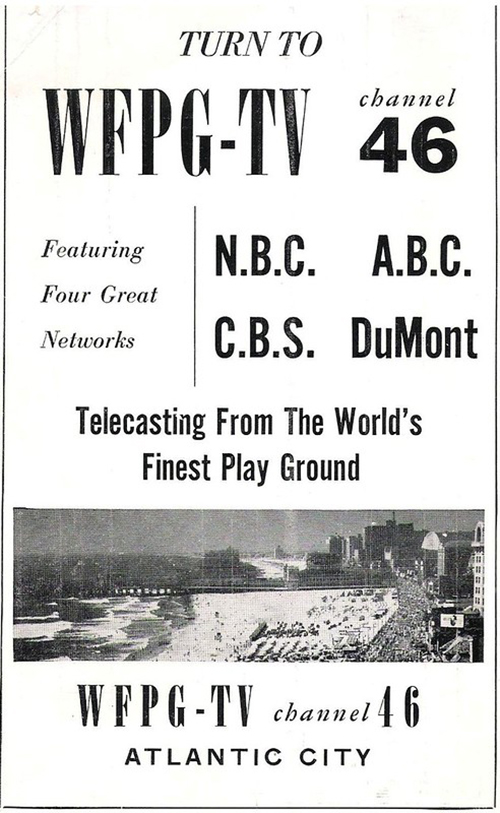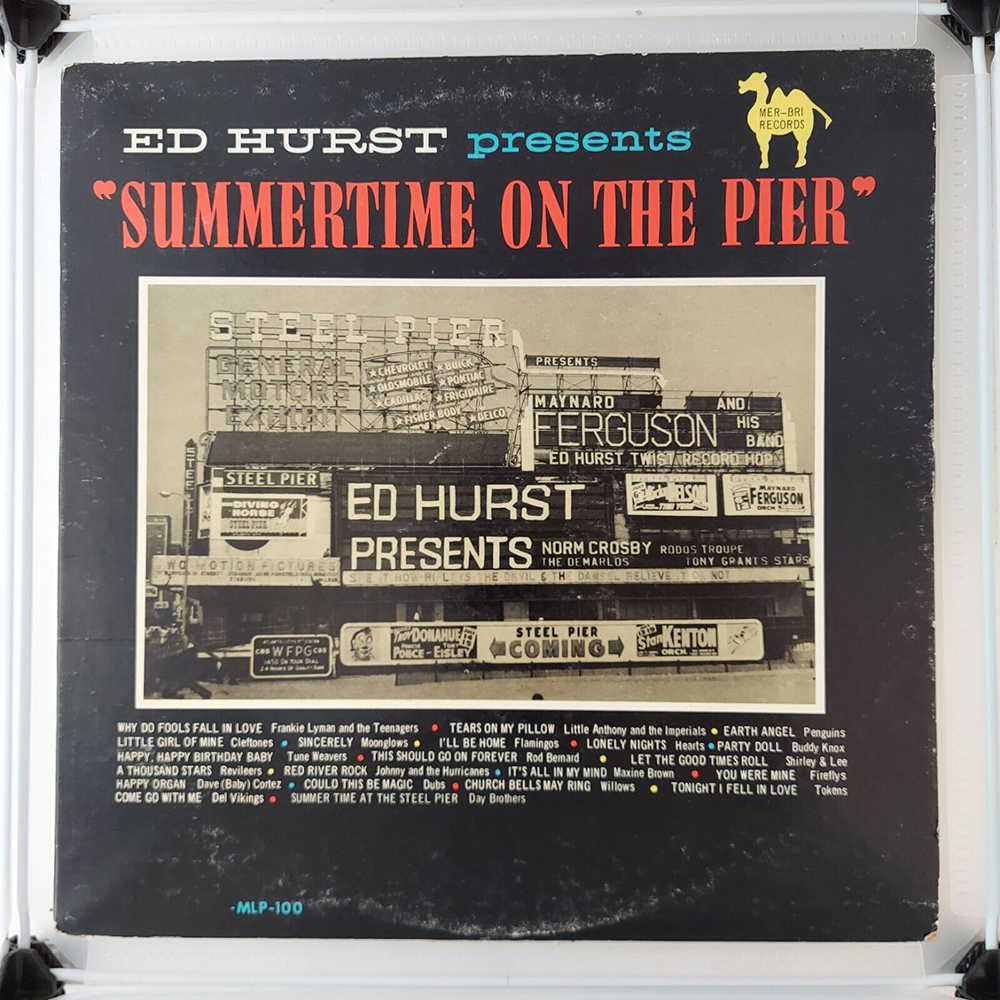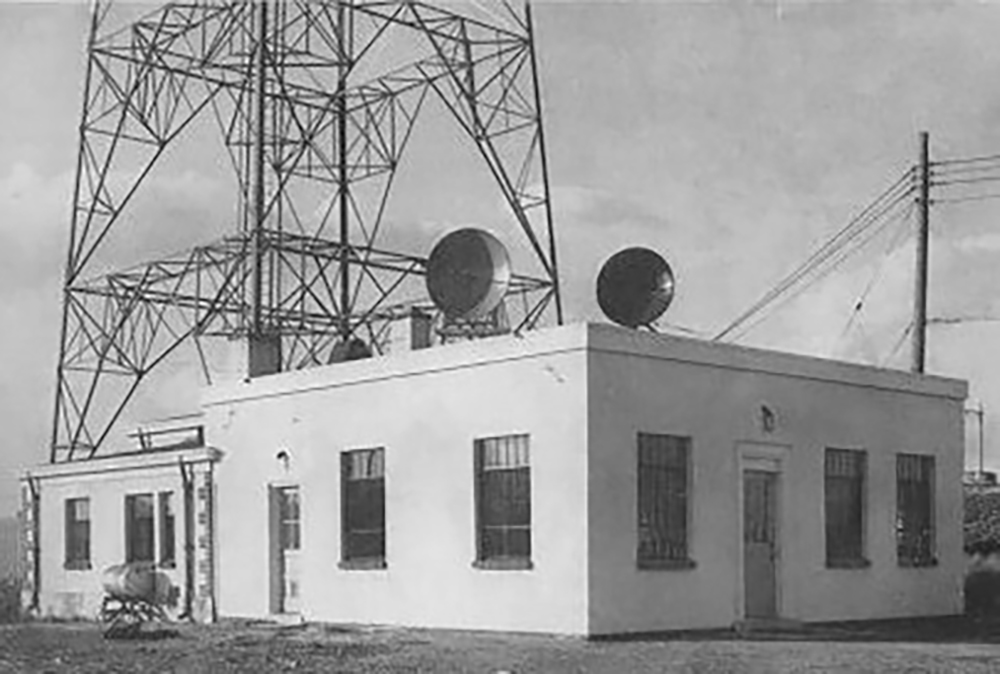By Bruce Klauber
After World War II, the number of new television stations taking to the airwaves grew so quickly that the Federal Communications Commission issued a moratorium on licensing new stations. The main issue, circa 1948, was that too many stations were broadcasting on the VHF band – channels 2 through 13. Interference was the rule making television reception poor, including at the shore.
The freeze on new licensing began in October of 1948, and lasted until July 1, 1952. During those years, unless they invested in a rooftop antenna system, shore residents who wanted to watch television had to deal with poor reception from channels 3, 6, and 10 out of Philadelphia.
At that juncture, the entire state of New Jersey could only receive a relatively decent signal from one television station: Newark’s Channel 13, which would later become one of the cornerstones of the PBS Network.
Enter Fred Weber and Blair Thron of Neptune Broadcasting. Neptune, in those years, owned WFPG-AM and WFPG-FM radio at the shore (those stations, still on the air today, are now owned by Townsquare Media).

When the ban on licensing new stations was lifted, Weber and Thron believed the time was right for a Jersey Shore-based television station. On Oct. 29, 1952, Neptune was granted construction permits to build a television station.
Neptune’s headquarters were enlarged, and new transmitting equipment was purchased and installed. Weber and Thron were impatient, and somehow, after a mere 51 days of work, WFPG – Channel 46 on the UHF television dial – went on the air, becoming South Jersey’s first television station. It was only the second UHF station in the country to hit the airwaves.
While all this may have been cause for celebration, there were problems from the outset. The main issue was how shore viewers could watch Channel 46 on their television sets. It wasn’t until 1962 that Congress passed what was called The All Channel Receiver Act, which mandated that by April 30, 1964, all television sets had to include a UHF tuner capable of receiving channels 14 to 83. Until then, televisions that could receive the UHF signal were rare and were only offered as a high-grade option requiring an expensive converter.
A WFPG test pattern went on the air on the evening of Dec. 21, 1952. At 10:45 that night, the station ran what they called “a commercial film,” followed by the broadcast of shows from the four VHF television stations on the air from Philadelphia at that time: NBC, CBS, ABC, and occasionally, the ill-fated Dumont Network.
Facilitating the broadcast wasn’t easy. The station had to arrange for microwave signals to transmit to Atlantic City from the main Philadelphia signal. But it worked, and within 90 days WFPG was said to be on for some 90 hours per week. Daytime programming would come later.
This sounds impressive on paper, but just who, if anyone, was out there watching? Could shore viewers figure out how to tune in WFPG and how many homes were even able to receive the UHF signal?
WFPG hired C.E. Hooper, then a part of the A.C. Nielsen ratings company, to take a survey. The results of the survey were not great. Although 68.5 percent of shore residents owned a television in 1952, only around 6 percent had installed a UHF antenna. An additional 4 percent said they were ordering UHF converters. In total, 8,200 homes at the shore could tune in shows like “The Life of Riley” on WFPG.
Despite the reception and technical issues, 8,200 homes meant something, and competition was competition in the TV business, even in 1952. It was Weber and Thron’s assertion at the time that Philadelphia stations got wind of the survey and what WFPG was doing, and began telling prospective advertisers that their signal was not only better than that of Channel 46, but that TV owners need not be concerned about upgrading in order to receive a UHF station.

Evidently, the advertisers believed what the Philadelphia television sales people were saying. By May of 1954, the Philadelphia stations basically put Channel 46 out of business.
Having won the war, in that same year, Philadelphia stations WCAU, WFIL, and WRCV all moved their towers to the Roxborough, Pa., area – the highest point in the Greater Delaware Valley – or built taller towers. By 1957, the shore was receiving relatively high-quality television signals from the Philadelphia stations, and Atlantic City was officially declared a part of the Philadelphia market.
It was a noble experiment and Weber and Thron were clearly ahead of their time. Although they were visionaries, even they would likely be astounded by what has happened in the television market some 70 years after Channel 46 hit the shore airwaves.
While UHF television as we once knew it has long been a memory, and “The Life of Riley” may not be on the television schedule these days, the shore still has a semblance of a television presence today.
WMGM-TV has been around in various guises since 1966. It was an NBC station for years, but that partnership ended in 2014 because of the overlap of broadcasts from NBC affiliates in Philadelphia and New York.
In its years as an independent station, WMGM had its own news operation and produced several original shows, including one hosted by the fondly-remembered Atlantic City journalist, David Spatz. Now owned by Univision, WMGM Channel 40 is still on the air.
You may not have heard of it, but WACP Channel 4 is a religious station located in Millville, but licensed in Atlantic City. It’s been on the air since 2012 and was added to the Comcast lineup in the same year, with programming consisting of infomercials, kids’ shows, and home shopping programs. Three years ago, WACP was purchased for $10 million by Tri-State Christian television.
WMCN, broadcast via Channel 44, was originally licensed in Atlantic City in 1981 as a UHF station. It has changed hands several times, and produced some original programming through the years, including news shows hosted by former Philadelphia news anchors Dawn Stensland and Don Tollefson. In 2018, the license was transferred to Princeton. Since 2021, the majority of WMCN’s current programming has been provided by the SHOPHQ home shopping network.
Atlantic City’s best-known television program, “Summertime on the Pier,” was never broadcast or produced by a shore-licensed television station.
Hosted by the late and great broadcasting personality, Ed Hurst, and broadcast live from the Steel Pier, “Summertime” first went on the air in 1958 and was broadcast on Philadelphia’s WRCV television. Through the years, the ever-popular program was broadcast by WCAU, WPHL, and WFIL television. It continued, as “The Steel Pier Show,” until 1978. Sadly, no films or tapes of that famed show are known to still exist.
Today, most of the Jersey Shore is served by the Comcast cable company. Just as a lark, I tuned in to Channel 46 to see what’s broadcast over that station right now. Broadcasting on Channel 46 is the TLC network, which originally was “The Learning Channel,” until it was purchased by Warner Bros./Discovery in the late 1990s. The TLC Network is now broadcast to more than 95 million homes in the United States – a far cry from the 8,200 homes that received Channel 46’s broadcasts of “The Life of Riley” in 1952. How far we’ve come.
Bruce Klauber is the author of four books, an award-winning music journalist, concert and record producer and publicist, producer of the Warner Brothers and Hudson Music “Jazz Legends” film series, and performs both as a drummer and vocalist.











One Response
This article neglects to mention that Atlantic City had one of the first cable tv systems, giving Atlantic City residents clear reception of channels from Philadelphia (and also New York City). Founded by Hugh McGinty, my grandfather.